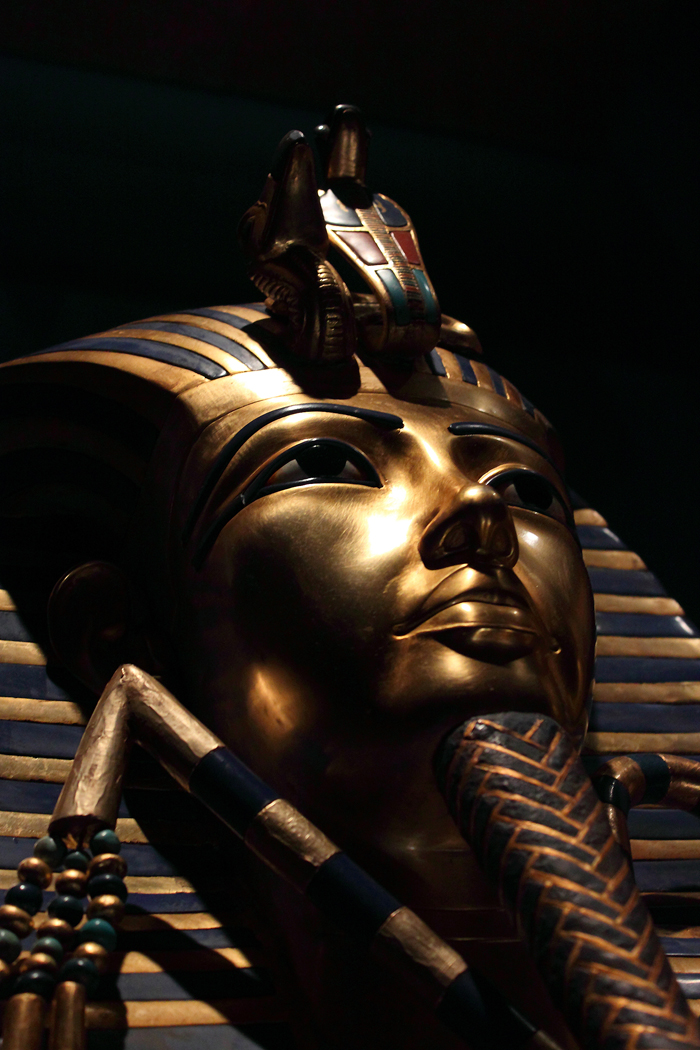The Curse of King Tut: Facts & Fable

Among the world's most famous curses is the "Curse of the Pharaoh," also known as King Tut's Curse. Ever since King Tutankhamun's tomb was discovered in Egypt's Valley of the Kings, stories circulated that those who dared violate the boy king's final resting place faced a terrible curse.
Though not as dramatic as a murderous mummy, it is widely claimed that many people associated with opening the tomb fell soon victim to the curse, dying under mysterious circumstances. The legend gained traction because a few of the people who were involved in finding the tomb did, in fact, die not long after it was opened.
Did financier pay with his life?
The highest profile death associated with the curse is probably that of George Edward Stanhope Molyneux Herbert, the fifth Earl of Carnarvon, a British aristocrat and amateur Egyptologist who helped finance the search. His death on March 25, 1923 — a year after the tomb was opened — is widely regarded as mysterious, but, in fact, he suffered from poor health before he arrived in Cairo, and in any event died from a decidedly mundane mosquito-carried disease. The idea of a curse was promoted by no less a prominent person than Sherlock Holmes creator Sir Arthur Conan Doyle (who also wrote a book explaining that fairies were real).
There were many dozens of people connected in some way to opening Tutankhamun's tomb (ranging from security guards to archaeologists), and out of that many people some unexpected deaths would be expected by random chance. In his book "An Encyclopedia of Claims, Frauds, and Hoaxes of the Occult and Supernatural," investigator James Randi notes that "the average duration of life for ... those who should have suffered the ancient curse was more than twenty-three years after the 'curse' was supposed to become effective. Carnarvon's daughter died in 1980, a full fifty-seven years later. Howard Carter, who not only discovered the tomb and physically opened it, but also removed the mummy of Tutankhamun from the sarcophagus, lived until 1939, sixteen years after that event."
Not only did Carter live to a fairly ripe age of 64 before succumbing to cancer, but Sgt. Richard Adamson, a member of Carter's team who guarded the burial chamber round the clock for seven years and was the European closest to Tutankhamun's remains, lived for another 60 years until his death in 1982. And he is not alone; Randi notes, "This group died at an average age of seventy-three plus years, beating the actuarial tables for persons of that period and social class by about a year. The Curse of the Pharaoh is a beneficial curse, it seems." [Photos: The Life and Death of King Tut]
Why a curse?
So where did the curse come from? According to Randi, "When Tut's tomb was discovered and opened in 1922, it was a major archaeological event. In order to keep the press at bay and yet allow them a sensational aspect with which to deal, the head of the excavation team, Howard Carter, put out a story that a curse had been placed upon anyone who violated the rest of the boy-king." Carter did not invent the idea of a cursed tomb, but he did exploit it to keep intruders away from his history-making discovery.
In fact, the tombs of all royalty — not just Tutankhamun's — were said to have exactly the same "curse" and had been opened with no resulting evil effects. Howard Carter was far from alone in making an effort to scare away potential grave robbers with the threat of supernatural wrath. Indeed, a famous writer offered a very similar curse:
Good frend, for Iesus sake forebeare To digge the dust encloased heare. Bleste be ye man [that] spares these stones, And curste be he [that] moves my bones."
"Blessed be the man that spares these stones, and cursed be he that moves my bones": This is William Shakespeare's epitaph, dating back to 1616. Though the world's best-known dramatist, Shakespeare was not being dramatic when he wrote these words. Instead, he was trying to prevent something unsavory that neither his fame nor fortune could deter: his corpse being dug up by grave robbers. These "anatomists" did not covet the Bard's body out of spite or malice but instead wanted it for the sake of science, to sell to doctors for medical use in schools.
Shakespeare was only one of many at the time concerned about post-mortem theft; grave robbing was quite common during Shakespeare's time and long before. Whether Howard Carter, King Tut, or William Shakespeare truly believed in curses is irrelevant; the important thing is that those who might disturb their graves believe in them. And it worked: nearly a century after Tut's tomb was opened, many people still believe in it.
Benjamin Radford, M.Ed., is Deputy Editor of Skeptical Inquirer science magazine and author of seven books including Scientific Paranormal Investigation: How to Solve Unexplained Mysteries.
Sign up for the Live Science daily newsletter now
Get the world’s most fascinating discoveries delivered straight to your inbox.











